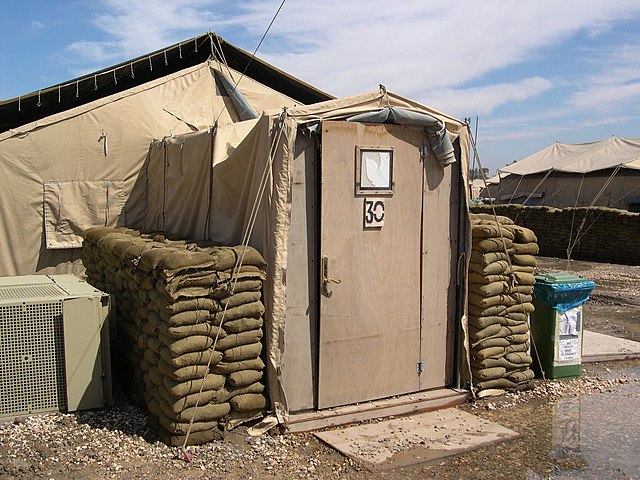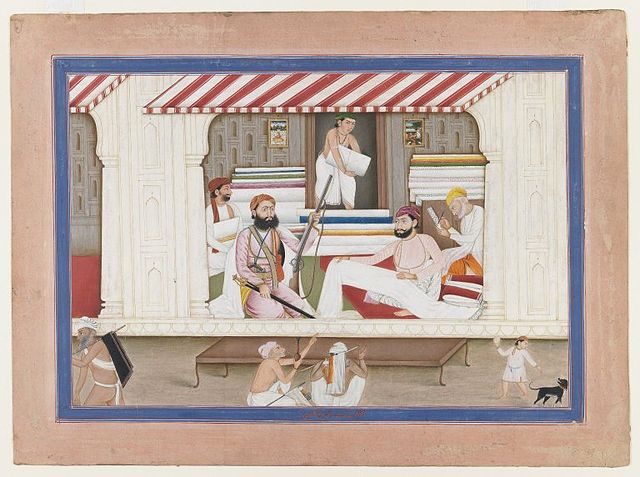A tent is a shelter consisting of sheets of fabric or other material draped over, attached to a frame of poles or a supporting rope. While smaller tents may be free-standing or attached to the ground, large tents are usually anchored using guy ropes tied to stakes or tent pegs. First used as portable homes by nomads, tents are now more often used for recreational camping and as temporary shelters.
A modern two-person, lightweight hiking dome tent; it is tied to rocks as there is nowhere to drive stakes on this rock shelf
Roman Army leather tents (centre left), as depicted on Trajan's Column in Rome (photo of plaster casts)
A Berber tent near Zagora, Morocco
U.S. Army tent with constructed wooden entrance, air conditioner, and sandbags for protection. Victory Base, Baghdad, Iraq (April 2004).
Textile is an umbrella term that includes various fiber-based materials, including fibers, yarns, filaments, threads, different fabric types, etc. At first, the word "textiles" only referred to woven fabrics. However, weaving is not the only manufacturing method, and many other methods were later developed to form textile structures based on their intended use. Knitting and non-woven are other popular types of fabric manufacturing. In the contemporary world, textiles satisfy the material needs for versatile applications, from simple daily clothing to bulletproof jackets, spacesuits, and doctor's gowns.
Handmade floral patterns on textiles, The production of textiles which were initially artisanal work, has grown into a vast field today that includes the production of fibers, yarns, fabrics, and various fibrous products for different domestic and industrial usages.
In textile production, longitudinal yarns are referred to as warp and are interlaced with weft or filing yarns to create a woven fabric.
Weaving
Cloth merchant's shop








